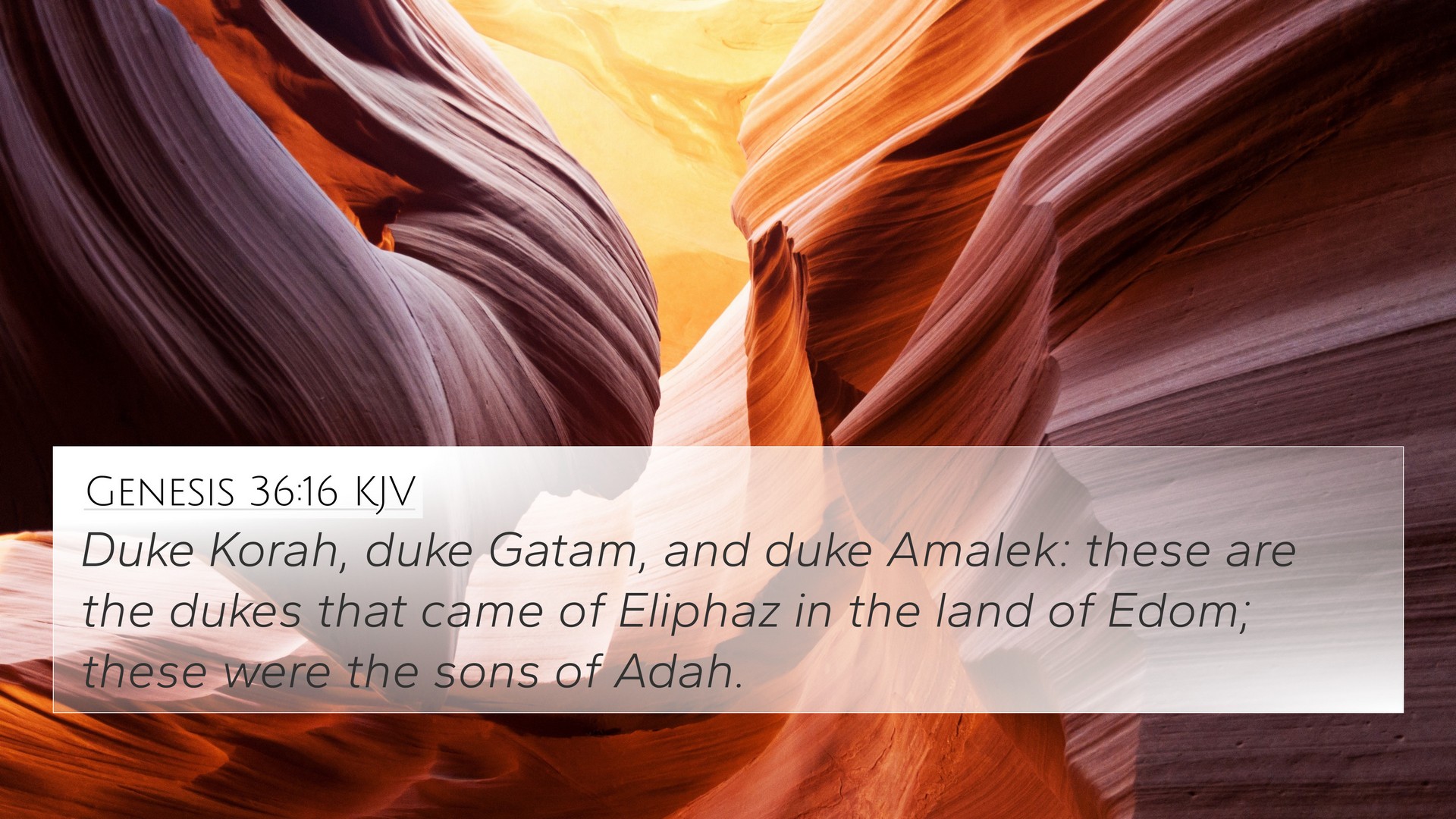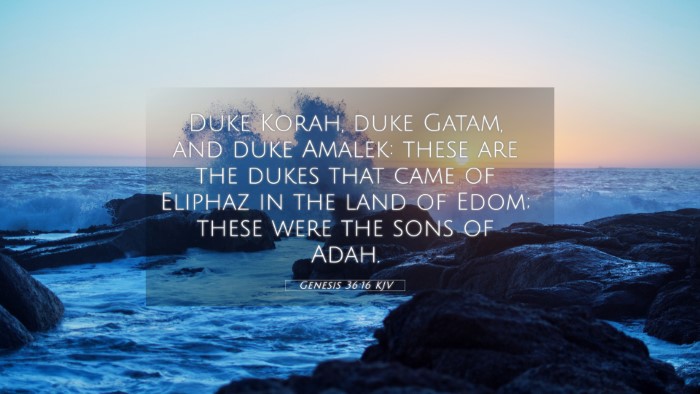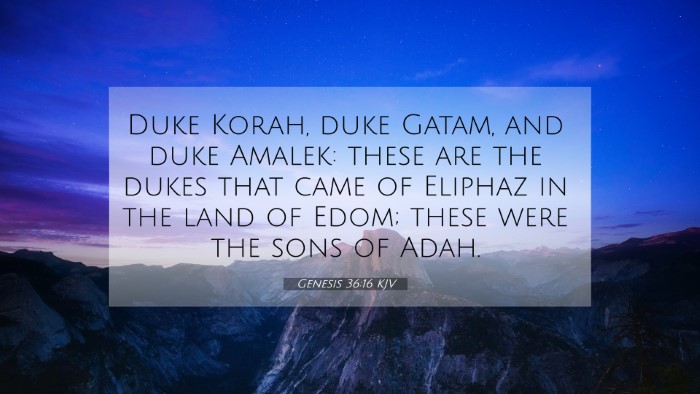Understanding Genesis 36:16
Genesis 36:16 states: "Duke Korah, Duke Gatam, and Duke Amalek; these are the dukes that came of Eliphaz in the land of Edom; these were the sons of Adah." This verse provides insight into the descendants of Esau and the formation of the Edomite lineage. Through this brief genealogy, it highlights the importance of family lineage in the biblical narrative and sets the stage for the relationships between Israel and Edom.
Summary of Biblical Meaning
This verse reflects the continuation of the line of Esau, showing the significance of his offspring within the broader context of Old Testament family history. It identifies the dukes that stemmed from Eliphaz, Esau's son, and connects Edomite history directly to the patriarchal story of Genesis.
Commentary Insights
- Matthew Henry's Commentary: Henry elucidates that the mention of specific dukes serves to establish a historical and social hierarchy in Edom. It illustrates the early governance and leadership structure that arose from Esau's descendants.
- Albert Barnes' Commentary: Barnes highlights the significance of the term "dukes," which indicates a ruling class within Edom. This nomenclature suggests that the descendants of Esau were prominent and established leaders, thereby providing a backdrop of political structures relative to Israel.
- Adam Clarke's Commentary: Clarke discusses the cultural implications of the Edomite lineage, noting that the descendants listed are critical to understanding the dynamics between Edom and Israel. Moreover, the genealogy reflects God's plan unfolding through families and nations.
Bible Verse Cross-References
This verse relates to several other scriptures that help deepen understanding and highlight connections between biblical texts:
- Genesis 25:30-34: Highlights the birthright conflict between Esau and Jacob, providing context for the Edomite lineage.
- Genesis 36:1-5: Offers additional genealogical information about Esau, emphasizing the family heritage.
- 1 Chronicles 1:35-38: Discusses the descendants of Esau, establishing the continuity of the Edomite family line.
- Obadiah 1:10-14: Relates to the fate of Edom, foreshadowing tensions between Jacob's descendants and Esau's.
- Numbers 20:14-21: Provides insights into Israel's relationship with Edom as they sought passage through the land.
- Deuteronomy 2:1-6: Discusses Israel's journey and the prohibition against conflict with Edom, which emphasizes the importance of family ties.
- Malachi 1:2-3: Addresses God’s love for Jacob and hatred for Esau, shedding light on the theological implications of these lineages.
Thematic Bible Verse Connections
Understanding the genealogy in Genesis 36:16 is essential for appreciating the larger biblical narrative and the intricacies of relationships between nations. The Edomites, descendents of Esau, play a significant role throughout the Old Testament, illustrating God’s purposes and the fulfillment of prophecies across generations.
Cross-Referencing Biblical Texts
Engaging in cross-references is critical for deeper insights. When studying Genesis 36:16, consider utilizing various tools for Bible cross-referencing to explore connections. For example:
- Utilize a Bible concordance to find related terms and themes.
- Engage with a Bible cross-reference guide to build links between the Old and New Testament.
- Explore how themes of inheritance and lineage play out across other scripture through cross-reference Bible study methods.
Conclusion and Further Study
The genealogy in Genesis 36:16 is not merely a historical record but a component of a broader narrative touching on major themes of identity, conflict, and divine purpose in human history. As you explore these connections, remember the cross-referencing Bible study methods at your disposal. Using these resources can aid greatly in sermon preparations and personal study, revealing more profound insights into scripture.
FAQs on Cross-Referencing
- How to find cross-references in the Bible? Use a comprehensive Bible cross-reference system or tools designed specifically for that purpose.
- Identifying connections between Old and New Testament? Focus on themes such as fulfillment of prophecies, relations of law and grace, and theological concepts that transcend the testaments.
- Similarities between Genesis 36:16 and New Testament themes? Look at how identity and heritage play a significant role in Paul's teachings and other New Testament writings.



